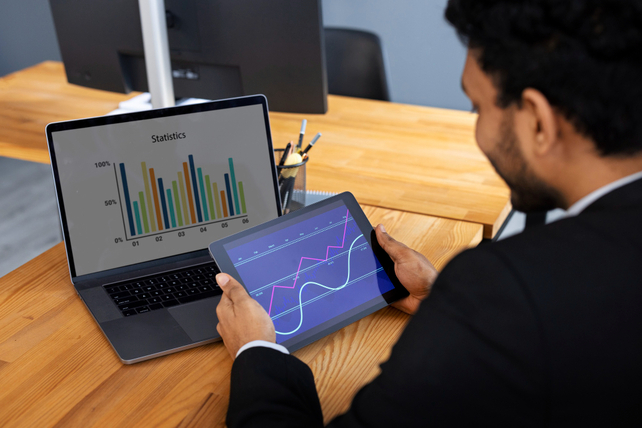What is Remote Performance Management & How to Manage It?

In recent years, the landscape of work has undergone a significant transformation. The rise of remote work, accelerated by global events such as the COVID-19 pandemic, has shifted traditional office dynamics to virtual environments. This shift has necessitated the development of new strategies and tools for managing employee performance effectively. Remote Performance Management (RPM) is the structured process of overseeing and evaluating the performance of employees who work outside the traditional office setting. This article delves into the concept of RPM, its importance, challenges, and effective strategies for implementation.
Understanding Remote Performance Management
Remote Performance Management involves the application of performance management principles to remote working scenarios. It encompasses setting performance goals, monitoring progress, providing feedback, and evaluating outcomes for employees who work from various locations, often using digital tools and communication platforms.
Importance of RPM
This section explores the importance of RPM, highlighting how it contributes to productivity, accountability, employee development, and overall organizational success.
1. Enhancing Employee Productivity
a. Setting Clear Expectations
RPM involves setting clear, measurable goals and expectations. By defining what success looks like, employees can focus their efforts on achieving specific targets. This clarity helps remote workers prioritize their tasks and manage their time effectively.
b. Continuous Monitoring
Through RPM, managers can monitor employee performance continuously using various digital tools. This ongoing oversight helps in identifying bottlenecks and addressing issues promptly, ensuring that productivity levels remain high.
2. Promoting Accountability and Transparency
a. Clear Metrics and KPIs
Establishing clear Key Performance Indicators (KPIs) and metrics is a fundamental aspect of RPM. When employees know what they are being measured against, it fosters a sense of accountability. They understand the importance of meeting these benchmarks and the implications of not doing so.
b. Regular Feedback
Regular feedback is integral to RPM. It provides employees with insights into their performance, highlighting areas of strength and opportunities for improvement. This feedback loop promotes transparency and ensures that employees are aware of how their work contributes to overall organizational goals.
3. Facilitating Employee Development
a. Identifying Skill Gaps
RPM helps in identifying skill gaps among remote employees. Performance data and regular reviews can reveal areas where employees need additional training or support. Addressing these gaps through targeted development programs enhances employee capabilities.
b. Career Growth
Providing continuous feedback and development opportunities is crucial for career growth. Employees who feel supported in their professional development are more likely to stay with the organization and contribute positively. RPM ensures that remote employees have access to the same growth opportunities as their in-office counterparts.
4. Improving Employee Engagement and Retention
a. Recognition and Reward
Acknowledging and rewarding high performance is essential for maintaining employee morale. RPM allows for the identification and recognition of top performers, which boosts motivation and engagement. Engaged employees are more likely to be satisfied with their job, leading to higher retention rates.
b. Sense of Belonging
RPM can foster a sense of belonging among remote workers. Regular communication, feedback, and recognition help remote employees feel connected to the organization, reducing feelings of isolation and increasing their commitment to the company.
5. Adapting to Modern Work Environments
a. Flexibility and Adaptability
The modern workforce values flexibility and the ability to work from anywhere. RPM supports this shift by providing the necessary structure and oversight to ensure that remote work is effective. Organizations that implement robust RPM strategies can attract and retain top talent who seek flexible work arrangements.
b. Leveraging Technology
RPM leverages various technological tools to manage and evaluate performance. These tools facilitate communication, collaboration, and performance tracking, making it easier to manage a distributed workforce. By embracing technology, organizations can streamline their performance management processes and enhance overall efficiency.
6. Maintaining Organizational Alignment
a. Consistent Goals
RPM ensures that remote employees are aligned with the organization’s goals and objectives. By setting clear goals and regularly reviewing performance, managers can ensure that all employees are working towards the same targets, regardless of their physical location.
b. Cohesive Team Dynamics
Effective RPM fosters a cohesive team environment by promoting collaboration and communication among remote employees. Regular check-ins, team meetings, and collaborative tools help maintain a unified team dynamic, essential for achieving organizational success.
Challenges of Remote Performance Management
This section explores the primary challenges associated with RPM and offers insights into overcoming these obstacles.
1. Communication Barriers
a. Lack of Face-to-Face Interaction
In a traditional office setting, managers and employees benefit from spontaneous face-to-face interactions, which facilitate clear communication and quick resolution of issues. Remote work removes this dynamic, making it harder to convey tone, intent, and non-verbal cues through digital communication channels such as email, chat, and video calls.
b. Time Zone Differences
Remote teams often span multiple time zones, complicating synchronous communication. Scheduling meetings and ensuring real-time collaboration can be challenging, leading to delays and potential misunderstandings.
2. Monitoring and Measuring Performance
a. Reduced Visibility
Without the ability to observe employees in person, managers may find it difficult to gauge productivity and work habits. This lack of visibility can lead to challenges in accurately assessing performance and identifying areas where employees may need support.
b. Over-Reliance on Quantitative Metrics
In the absence of direct observation, managers might over-rely on quantitative metrics (e.g., hours logged, tasks completed) to evaluate performance. This approach can overlook qualitative aspects such as creativity, problem-solving, and teamwork, which are harder to measure but equally important.
3. Maintaining Engagement and Motivation
a. Isolation and Loneliness
Remote employees can experience feelings of isolation and loneliness due to the lack of social interaction with colleagues. This emotional disconnect can lead to decreased motivation and engagement over time.
b. Distraction and Burnout
Working from home introduces various distractions, from household chores to family responsibilities. Conversely, the blurring of boundaries between work and personal life can lead to overworking and burnout, negatively impacting performance.
4. Technology Dependence
a. Technical Issues
The reliance on digital tools and technology for remote work can be a double-edged sword. Technical issues such as internet outages, software glitches, and hardware failures can disrupt workflows and hinder productivity.
b. Learning Curve
Adopting new performance management tools and platforms can present a learning curve for both managers and employees. Ensuring that everyone is comfortable and proficient with these tools is essential for effective RPM.
5. Building and Sustaining Trust
a. Micromanagement Tendencies
In the absence of physical oversight, some managers may resort to micromanagement, excessively monitoring employees to ensure productivity. This approach can erode trust and autonomy, leading to decreased morale and engagement.
b. Trusting Remote Employees
Conversely, managers may struggle to trust that remote employees are working effectively without constant supervision. This lack of trust can hinder the development of a positive and productive remote work culture.
6. Consistency in Performance Evaluation
a. Subjectivity and Bias
Remote performance evaluations can be susceptible to subjectivity and bias. Without direct observation, managers might rely on incomplete information or personal biases when assessing performance, leading to unfair evaluations.
b. Inconsistent Standards
Ensuring consistent performance standards across remote teams can be challenging. Different managers might have varying expectations and evaluation criteria, resulting in discrepancies and potential conflicts.
Overcoming the Challenges
1. Enhancing Communication
- Structured Communication Plans: Establish clear communication protocols, including regular check-ins, team meetings, and feedback sessions. Utilize video calls to facilitate more personal interactions and bridge the gap created by remote work.
- Asynchronous Communication: Leverage tools that support asynchronous communication (e.g., Slack, Microsoft Teams) to accommodate time zone differences and ensure continuous collaboration.
2. Effective Performance Monitoring
- Balanced Metrics: Use a combination of quantitative and qualitative metrics to evaluate performance. Incorporate self-assessments, peer reviews, and manager evaluations to gain a comprehensive view of employee performance.
- Project Management Tools: Implement project management tools (e.g., Trello, Asana) that provide visibility into task progress and facilitate real-time updates, helping managers track performance without micromanaging
3. Fostering Engagement and Motivation
- Virtual Team Building: Organize virtual team-building activities and social events to foster a sense of community and reduce feelings of isolation. Encourage informal interactions through virtual coffee breaks or chat groups.
- Work-Life Balance: Promote a healthy work-life balance by setting clear boundaries, encouraging regular breaks, and providing resources for managing stress and preventing burnout.
4. Addressing Technology Challenges
- Technical Support: Ensure robust technical support for remote employees. Provide resources and training to help them navigate technical issues and use performance management tools effectively.
- User-Friendly Tools: Select performance management tools that are intuitive and user-friendly to minimize the learning curve and ensure smooth adoption.
5. Building Trust
- Empowerment and Autonomy: Empower employees by giving them autonomy over their work and trusting them to deliver results. Focus on outcomes rather than processes, and avoid micromanagement.
- Transparent Communication: Foster transparency by sharing information openly and involving employees in decision-making processes. Regularly communicate organizational goals, updates, and changes.
6. Ensuring Consistency in Evaluations
- Standardized Criteria: Develop standardized performance evaluation criteria and ensure that all managers are trained to apply them consistently. Use performance management software to streamline and standardize the evaluation process.
- Bias Awareness Training: Provide training for managers on recognizing and mitigating biases in performance evaluations. Encourage objective assessments based on clear, predefined criteria.
Strategies for Effective Remote Performance Management
1. Clear Goal Setting
Setting clear, measurable, and achievable goals is the cornerstone of effective performance management. In a remote setting, it is even more critical to ensure that employees understand what is expected of them. Utilize the SMART criteria (Specific, Measurable, Achievable, Relevant, Time-bound) to define goals that are clear and actionable.
2. Regular Communication
Regular and structured communication is essential to overcome the barriers of remote work. Schedule frequent check-ins via video calls, use instant messaging for quick updates, and email for more detailed communications. These touchpoints help in monitoring progress, addressing concerns, and providing feedback in real-time.
3. Performance Monitoring Tools
Leverage technology to track performance metrics effectively. Tools such as project management software (e.g., Asana, Trello), time tracking apps (e.g., Toggl, Clockify), and performance management systems (e.g., Lattice, 15Five) can provide valuable insights into employee productivity and project progress.
4. Regular Feedback and Reviews
Consistent feedback is vital for continuous improvement. Implement a regular review process that includes both formal performance reviews and informal feedback sessions. Use these sessions to recognize achievements, discuss challenges, and set new goals.
5. Employee Engagement Strategies
Engagement is crucial for remote teams. Foster a sense of community through virtual team-building activities, recognition programs, and open forums for sharing ideas and concerns. Encourage social interactions through virtual coffee breaks or team lunches.
6. Training and Development
Offer continuous learning opportunities to remote employees. Provide access to online courses, webinars, and virtual workshops. Encourage participation in professional development programs to enhance their skills and knowledge.
7. Building Trust
Trust is the foundation of a successful remote team. Encourage transparency by sharing information openly and involving employees in decision-making processes. Show trust in your team’s ability to deliver results without micromanaging.
8. Adapting Leadership Styles
Remote performance management requires a shift in leadership style. Leaders should focus on outcomes rather than processes, empowering employees to take ownership of their work. Adopt a supportive and coaching approach to guide employees rather than a directive style.
Implementing Remote Performance Management
Step-by-Step Guide
- Define Objectives: Start by defining the objectives of your RPM strategy. What do you want to achieve through effective performance management?
- Select the Right Tools: Choose performance management tools that align with your objectives and are user-friendly for your remote workforce.
- Set Clear Expectations: Communicate performance expectations, goals, and KPIs clearly to all remote employees.
- Train Managers and Employees: Provide training for managers on how to manage remote teams and for employees on how to use the performance management tools effectively.
- Establish a Communication Plan: Develop a communication plan that outlines the frequency and modes of communication for performance reviews, feedback sessions, and regular check-ins.
- Monitor and Adjust: Continuously monitor the effectiveness of your RPM strategy and make adjustments as needed based on feedback and performance data.
- Evaluate and Iterate: Regularly evaluate the overall RPM process to identify areas for improvement and iterate on your strategy to ensure it remains effective and relevant.
Conclusion
Remote Performance Management is an essential component of modern workforce management. By understanding its importance, recognizing the challenges, and implementing effective strategies, organizations can ensure that their remote employees remain productive, engaged, and aligned with the company’s goals. The key to successful RPM lies in clear communication, the right tools, continuous feedback, and building a culture of trust and accountability. As remote work continues to evolve, so too must the methods for managing and supporting remote employees, ensuring they have the resources and guidance needed to excel in their roles.




